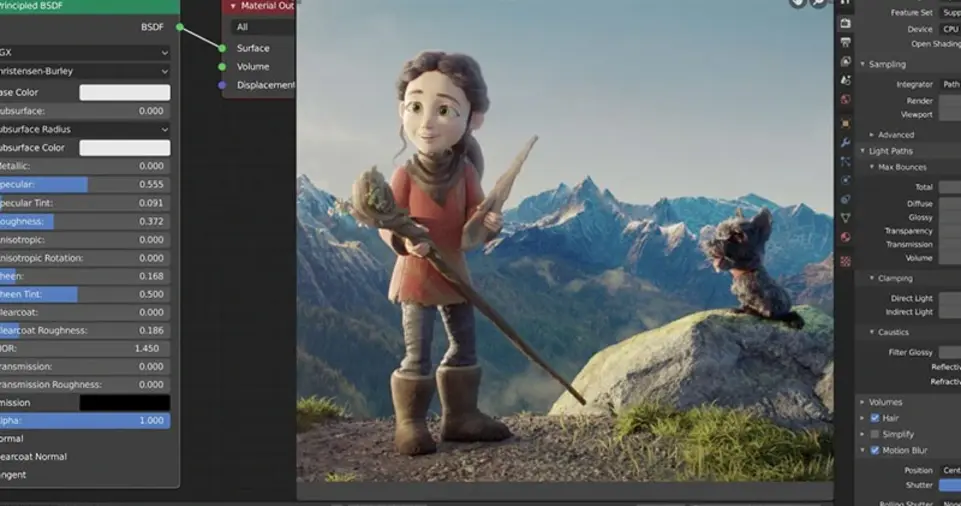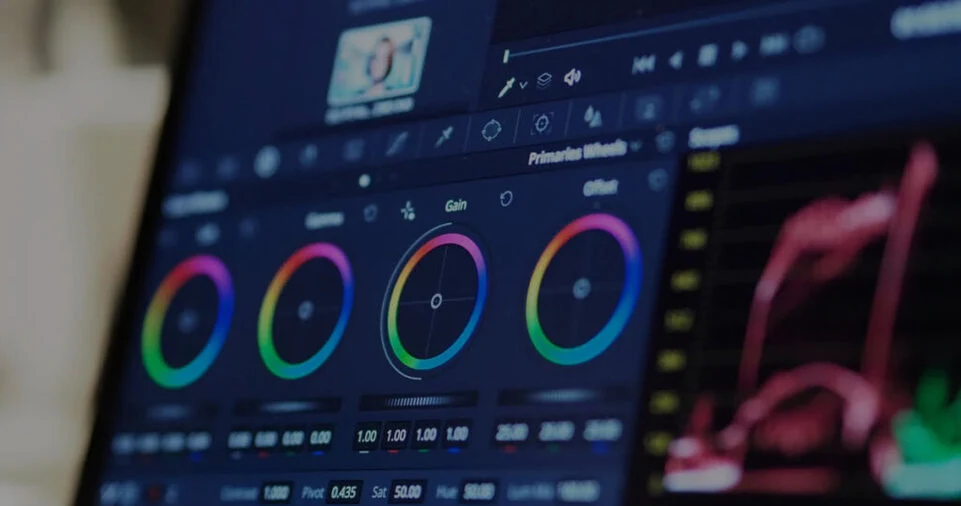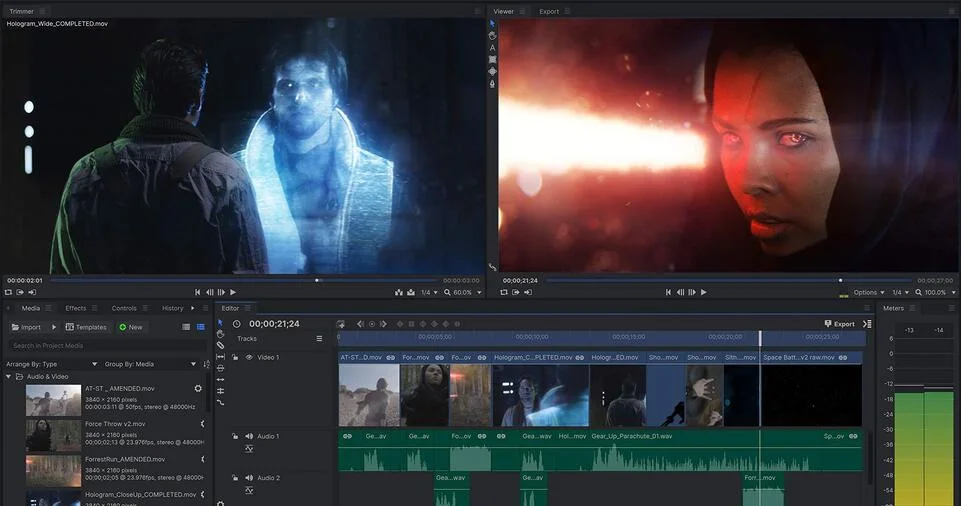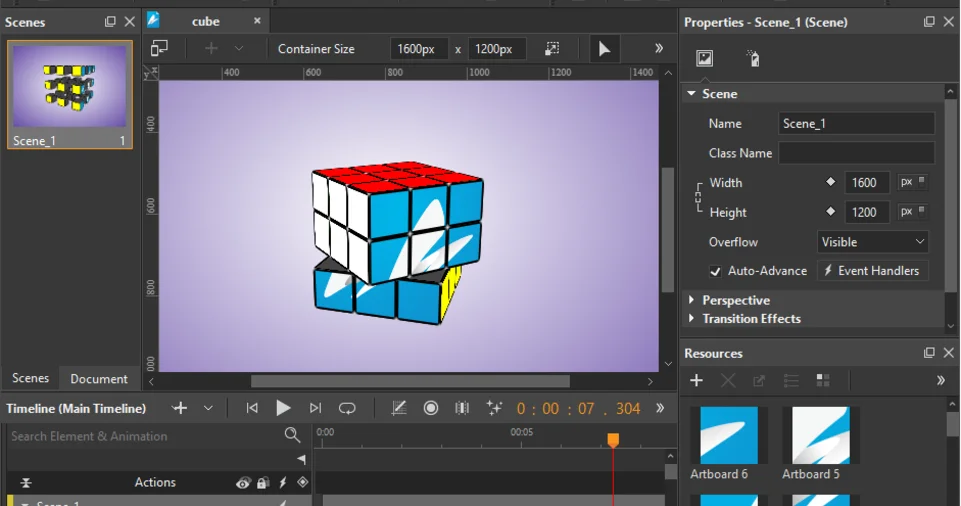Animation has evolved from simple hand-drawn sketches to highly sophisticated digital designs used in a wide range of industries, including film, gaming, advertising, and web design.
Whether you are an aspiring animator, a hobbyist, or a seasoned professional, understanding the tools available can significantly enhance your ability to create stunning visual narratives.
This guide aims to introduce you to the most important animation software available today, explaining the differences between them and helping you choose the right tool based on your specific needs and skill level.
In the world of animation, different software packages serve different purposes.
Some are better for 2D animation, while others specialize in 3D animation or motion graphics.
There’s even software for stop-motion animation, compositing, and audio editing.
As technology continues to improve, the tools available for animators have become more powerful, user-friendly, and accessible to all.
This detailed guide will explore the various categories of animation software, explain the features of each, and provide recommendations based on your project type and skill level.
By the end of this article, you’ll have a clearer understanding of the tools required to bring your creative ideas to life, whether you’re working on a short film, a video game, or a social media post. Let’s dive into the world of animation software!
2D Animation Software: Crafting the Magic of Flat Animation
What is 2D Animation?
2D animation refers to the art of creating moving images in a two-dimensional space.
Unlike 3D animation, where objects are modeled in a three-dimensional environment, 2D animation focuses on flat characters and environments.
This type of animation is widely used for creating cartoons, animated GIFs, explainer videos, and even user interface animations.
While the techniques have evolved significantly over the years, the core principles of 2D animation remain largely unchanged.
It is all about crafting movement through drawings, frames, and sequences.
Key Tools for 2D Animation
Adobe Animate
Adobe Animate is one of the most popular and versatile 2D animation software programs.
It allows animators to create vector-based animations, which are essential for clean, scalable graphics.
Animate offers a range of drawing tools, character rigging capabilities, and built-in features for creating smooth animations.
You can use Adobe Animate to design everything from simple animations to more complex interactive content for web and mobile applications.
It’s commonly used in creating animated web ads, cartoons, and educational videos.
Key Features:
- Vector-based animation tools
- Integration with Adobe Creative Cloud
- Advanced rigging tools
- Multiple export options (HTML5, GIFs, etc.)
Toon Boom Harmony
Toon Boom Harmony is another industry-leading software for 2D animation, renowned for its powerful features that make it ideal for both traditional and digital animation.
Harmony has a wide array of tools for frame-by-frame animation as well as rig-based animation, making it suitable for all types of 2D animation projects, from television shows to feature films.
Key Features:
- Rigging and puppet animation tools
- Bitmap and vector drawing tools
- Advanced compositing options
- Excellent for both traditional and cut-out animation styles
Krita
Krita is a free, open-source software that is mainly used for digital painting, but it also offers powerful animation tools.
Krita is a great option for independent artists or beginners who want to explore 2D animation.
It supports frame-by-frame animation, making it easy to create hand-drawn animated sequences.
Key Features:
- Free and open-source
- Supports both traditional animation and cut-out animation
- Timeline and onion skinning features for smooth animation creation
- Ideal for hand-drawn and sketch-based animation
Pencil2D
Pencil2D is a lightweight and user-friendly 2D animation tool designed for beginners.
It offers basic features for traditional, hand-drawn animation.
This free, open-source software is perfect for animators who are just starting and want to learn the fundamentals of 2D animation without the complexity of professional software.
Key Features:
- Easy-to-use interface
- Ideal for frame-by-frame animation
- Free and open-source
- Lightweight and minimalistic
3D Animation Software: Unlocking the Third Dimension

What is 3D Animation?
3D animation is the process of creating movement in a three-dimensional space.
It’s commonly used in video games, feature films, architectural visualizations, and VR experiences.
In 3D animation, objects are modeled in 3D space, allowing them to rotate and move in a more realistic way.
It requires specialized software that offers complex tools for modeling, texturing, rigging, and rendering.
While 2D animation focuses on flat designs, 3D animation introduces depth and realism, making it an essential tool for modern visual storytelling.
Key Tools for 3D Animation
Autodesk Maya
Autodesk Maya is one of the most powerful and widely used 3D animation software packages in the world.
It’s primarily used for modeling, rigging, and animating characters and objects.
Maya offers an extensive set of tools for creating detailed 3D models, textures, lighting effects, and simulations.
It’s the industry standard for high-end 3D animation and is widely used in film and game development.
Key Features:
- High-quality modeling and texturing tools
- Advanced rigging and animation features
- Integrated rendering capabilities
- Perfect for large-scale animation projects
Blender
Blender is a free, open-source 3D animation software that offers an incredible array of tools for modeling, rigging, animation, and rendering.
Despite being free, Blender is highly powerful and is used by both beginners and professionals in the animation industry.
Blender also supports 2D animation through its Grease Pencil tool, making it a versatile software for both 2D and 3D animation.
Key Features:
- Free and open-source
- Full 3D pipeline (modeling, rigging, animation, rendering)
- Grease Pencil for 2D animation
- Active community and extensive online resources
Cinema 4D
Cinema 4D is known for its ease of use and user-friendly interface. It is particularly popular among motion graphics artists and is widely used in the visual effects (VFX) industry.
While Cinema 4D is capable of high-quality 3D animation, it is especially renowned for its integration with other Adobe products like After Effects, making it an excellent choice for animators working on projects that involve a lot of motion graphics.
Key Features:
- Easy-to-use interface and workflow
- Excellent integration with Adobe After Effects
- Powerful tools for motion graphics and visual effects
- Ideal for creating 3D models and animations for marketing and advertisements
Motion Graphics Software: Bringing Design to Life

What are Motion Graphics?
Motion graphics is the art of creating animated graphic designs.
Unlike traditional animation, motion graphics focuses more on the visual design of text, shapes, and images, often used to communicate complex ideas simply.
This type of animation is widely used for title sequences in films, commercials, explainer videos, and even user interface elements.
Key Tools for Motion Graphics
Adobe After Effects
Adobe After Effects is the go-to tool for motion graphics artists.
This industry-standard software allows you to create both 2D and 3D animations and integrate them with live-action footage.
After Effects is highly versatile, offering robust tools for visual effects, compositing, and animation.
Whether you’re working on simple title animations or complex VFX sequences, After Effects has the tools you need to bring your ideas to life.
Key Features:
- Advanced animation and compositing tools
- Integration with other Adobe products
- Built-in templates and plugins for quick results
- Ideal for motion graphics, VFX, and post-production
Apple Motion
Apple Motion is a more affordable alternative to Adobe After Effects, tailored for users who work with Final Cut Pro.
It’s a powerful tool for creating motion graphics, visual effects, and titles.
While it’s not as feature-rich as After Effects, it offers a user-friendly interface and quick rendering times, making it an excellent choice for video editors and motion graphics artists working within the Apple ecosystem.
Key Features:
- Fast, real-time rendering
- Seamless integration with Final Cut Pro
- Great for title animations and lower-thirds
- Affordable pricing for Apple users
Stop-Motion Animation Software: Capturing the Magic Frame by Frame
What is Stop-Motion Animation?
Stop-motion animation involves taking a series of photographs of an object or puppet and stitching them together to create the illusion of movement.
It’s a labor-intensive but rewarding technique that has been used in everything from feature films to YouTube videos.
Stop-motion animation can involve claymation, puppet animation, or even object animation.
Key Tools for Stop-Motion Animation
Dragonframe
Dragonframe is a professional stop-motion animation software used in high-end productions like stop-motion feature films.
It offers real-time previews, camera controls, and excellent lighting control, making it the ideal tool for animators who want precision and quality in their stop-motion work.
Key Features:
- Real-time animation previews
- Camera and lighting control
- Advanced focus and exposure settings
- Widely used in professional stop-motion animation studios
Stop Motion Studio
Stop Motion Studio is a simple, intuitive app that allows you to create stop-motion animations on your phone or tablet.
This software is great for beginners or anyone who wants to create stop-motion projects on the go.
Key Features:
- Easy-to-use interface
- Ideal for mobile stop-motion animation
- Supports both frame-by-frame and time-lapse animations
- Useful for quick projects or learning the basics of stop-motion animation
ALSO READ: Top Free Tools and Apps: Start Animating on a Budget
Compositing and Visual Effects (VFX) Software: Enhancing Your Animations

What is Compositing and VFX?
Compositing involves combining visual elements from different sources into a single image or scene.
VFX, or visual effects, are used to enhance or create realistic visuals, often integrating animated elements into live-action footage.
Compositing and VFX are essential for film production, video games, and any media where multiple visual elements need to be seamlessly integrated.
Key Tools for Compositing and VFX
Nuke
Nuke is a high-end compositing software used in feature films and TV productions for VFX.
It allows for node-based compositing, meaning each visual effect or adjustment is done in a separate node, offering unparalleled control over the final look of your animation.
Key Features:
- Node-based compositing
- Advanced 3D compositing and camera tracking
- Excellent for feature films and TV production
- Used in major Hollywood studios for VFX work
Blackmagic Fusion
Fusion is a node-based compositing software used to create VFX and motion graphics.
It’s a powerful tool for compositing 2D and 3D animations, often used in film production, visual effects, and TV post-production.
Key Features:
- Node-based compositing
- Integration with other Blackmagic products
- Supports both 2D and 3D workflows
- Affordable pricing compared to other VFX tools
Audio Editing Software: Enhancing Your Animation with Sound
The Importance of Audio in Animation
In animation, sound plays a crucial role in bringing the visuals to life.
Whether it’s dialogue, sound effects, or background music, audio enhances the overall impact of your animation.
Having the right audio editing software is just as important as having the right animation tools.
Key Tools for Audio Editing
Adobe Audition
Adobe Audition is a professional audio editing software used by sound engineers and editors in the film, music, and broadcast industries.
It provides advanced tools for recording, mixing, and mastering audio, making it ideal for adding sound to your animations.
Key Features:
- Multi-track editing and mixing
- High-quality audio effects and filters
- Noise reduction tools
- Integration with Adobe Premiere Pro for seamless video editing
Audacity
Audacity is a free, open-source audio editing software that is widely used by podcasters, musicians, and animators.
It is a great tool for beginners, providing all the basic features needed to record, edit, and mix audio.
Key Features:
- Free and open-source
- Easy-to-use interface
- Supports multi-track editing
- Ideal for recording and editing voiceovers
Game Animation Software: Bringing Characters to Life in Video Games
What is Game Animation?
Game animation involves animating characters, objects, and environments within a video game.
This requires specialized software that works seamlessly with game engines to create realistic and interactive animations.
Whether you’re creating an indie game or working on a AAA project, game animation tools are essential for creating engaging and interactive player experiences.
Key Tools for Game Animation
Unity
Unity is a widely used game engine with built-in animation tools.
It offers powerful features for animating characters, objects, and scenes in 2D and 3D games.
Unity is widely used by indie game developers and large studios alike.
Key Features:
- Integrated animation tools
- Compatible with both 2D and 3D games
- Animation timeline and curve editor
- Real-time animation previews
Unreal Engine
Unreal Engine is another game engine with advanced animation tools.
Known for its high-quality rendering capabilities, Unreal Engine is used in AAA game development and virtual production.
It offers robust animation systems, physics-based simulations, and cinematic tools.
Key Features:
- High-quality rendering and animation tools
- Powerful physics-based simulations
- Real-time previews and cinematic tools
- Ideal for creating AAA-quality games and VR experiences
ALSO READ: How to Choose the Right Animation Software for Your Project
Conclusion: Choosing the Right Animation Software for Your Project
Choosing the right animation software is crucial to the success of your project.
Whether you’re creating a 2D animated short, a 3D character for a video game, or motion graphics for a commercial, the right software will make your creative vision a reality.
Take the time to understand your needs and select the tool that best fits your skill level and project requirements.
Each category of animation software serves a different purpose, so it’s important to match the right tool with your specific project.
Whether you’re just starting out or you’re already an experienced animator, the software you choose will significantly impact the quality of your final animation.
So dive in, experiment with the tools, and start creating the animation of your dreams!

